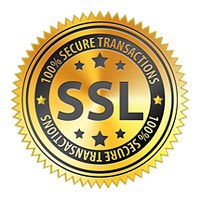This online snowboard lesson will go over Advance Snowboard Lesson: Dolphin Turns. Dolphin Turns can really help you develop fore aft movements on your snowboard. Developing these movements will really help you improve in skill in all parts of your riding. If you’ve got this down you’re moving dynamically with good rhythm. You’ll have access to all our snowboard tutorials when you signup that cover every step and feedback from your coach. We also have some free snowboard videos to prepare for ‘Snowboarding Backcountry’ on our YouTube Page. I recommend watching these snowboard videos; Building Rhythm, Advanced Snowboarding Getting Air, Snowboard Dynamic Flex & Extend, Active Passive Absorption, Upper/Lower Body Separation, Basics For Freestyle Features & Snowboarding Moguls Learn to snowboard online with flowingfreeride.com, Take Placement Quiz, take a look at Our Blog for more free content, and learn to Snowboard Right!
Building up to Dolphin Turns takes some time. It’s a progression that may take you one run or all season to master. You’re using the board efficiently. The snowboard has camber and shape to it. The sidecut is the edge radius shape, usually 8-10 Meters in radius. Camber is the shape of the board from tail to tip. Depending on the type of camber (regular, hybrid, reverse) when you move fore and aft on your snowboard you can pop off the nose and tail creating ollies and nollies. It’s super fun once you’re timing is down. It leads into riding the whole mountain better. In freestyle it opens the door to pop off terrain features or on flat trails you pop more to start spinning. In Freeride you’ll be able to move fore aft to absorb moguls and bumps that get you to Powder Fields and you cruise down the mountain faster. In Alpine riding you’ll be able to pop from edge to edge quicker to really help with the racecourse to improve speed and skill.
Start by making turns putting all your weight on your nose and then your tail. Feel the snowboard with your each leg by flexing one and extending the other so that they’re not doing the same thing. Think of them as independent. The snowboard should start coming off of the snow. Next you’ll start lifting the nose and tail off the snow down the fall line and then across it. You’re not making turns here you’re just balancing on your front foot and then back. You should be feeling the board bending. Now start to lift your front foot off the snow as you makes turns and then your back foot. Lift your front leg off the snow then your back leg. It’s an active movement that takes strength and good balance. See how high you can get the snowboard off the snow and to really bend it. When you get to the apex pop of your tail by extending your back leg. This will get the board to be straight again. Another way to think about it is the snowboard is a spring and when you pull it back it builds up power and when you let go it will come back with lots of force. This is what I’m trying to get you to feel in your snowboard by attempting these Dolphin Turns.
We’re bending the board like a bow and arrow. When you pull the bow back it bends and when you let go of the string it pops and shoot the arrow at high speeds and long distances. We’re bending our snowboard like a bow, creating that energy when we pop of the nose or tail. We need to finish our movement by popping off the tail and landing on the nose which is a ollie or pop off nose and land on tail nollie. Ollies and nollies is when we are moving fore aft and we are popping off our boards! Now ollie down the fall line and then across it on both toeside and heelside edges. Now put those movements, intensity and timing into your turns. You’re fore at the beginning of your turn and aft at the end. You’re turns should be symmetrical or the same shape on both heelside and toeside. It will happen naturally if you’re using the right efficient movements that you’ll start to pop to your new edge or at the transition of your turn. Soon you’ll be developing good rhythm to pop from edge to edge Ripping Dolphin Turns!
Dolphin turns are fun to do and a good workout. These types of movements are required of snowboarders to be AASI Level 3 Full Certified. Practicing Dolphin Turns helped me develop efficient body movements to get my AASI L3 in Snowboarding. Moving fore and aft on your snowboard opens the door to so many options in your riding style. Get out on the slopes and rip it up doing Dolphin Turns! You can signup to get access to all of our snowboard lessons, study guides, text books, glossary, tests and direct feedback from your coach. Learn to snowboard online with flowingfreeride.com and take a look at our YouTube Page for more free content and learn to snowboard right!


